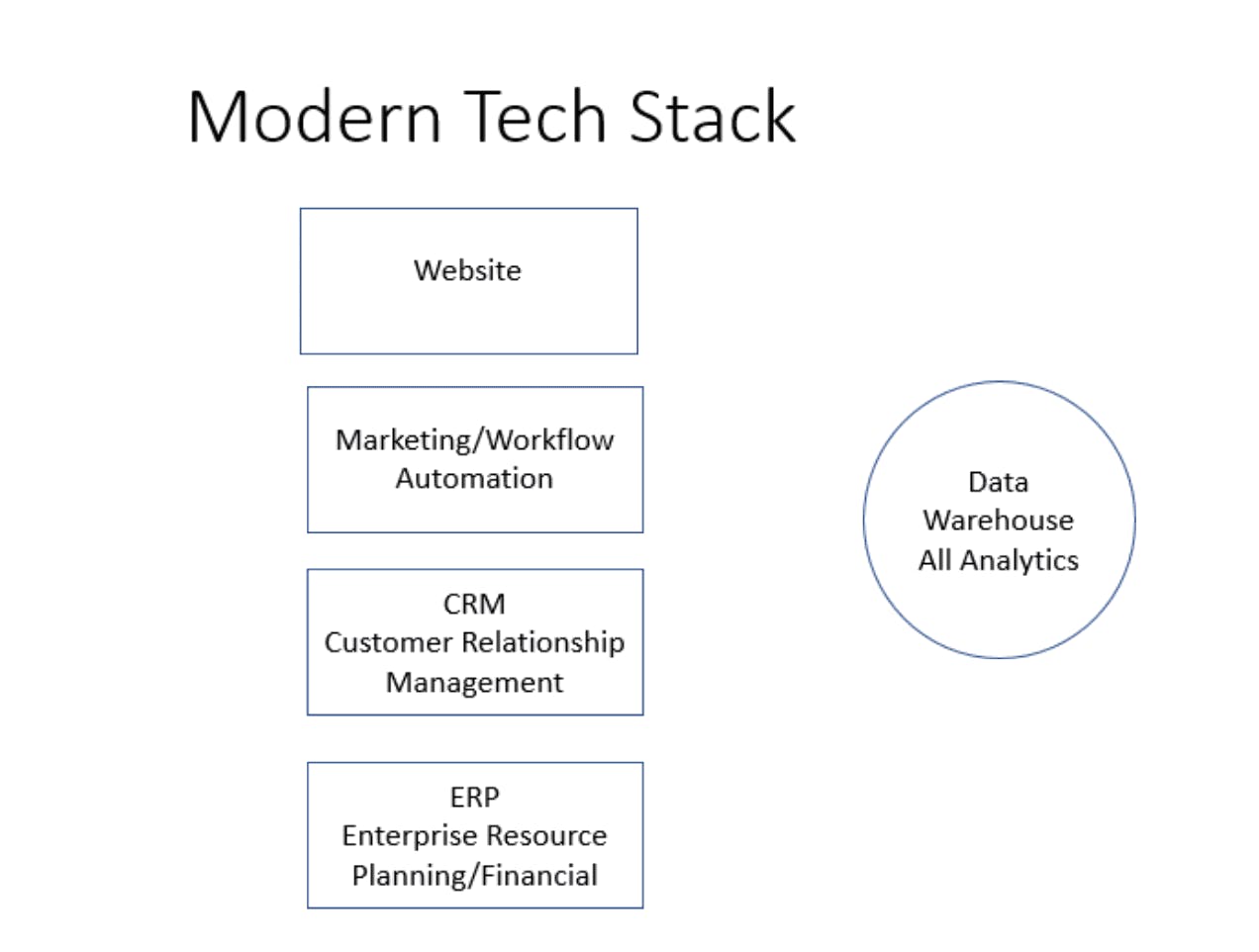
Preparing for Your Digital Transformation
All businesses need to “go” digital and transform their organization’s overall experience and processes into digital processes.
The first question that many small-medium enterprise leaders have is, what does this mean?
Why Digital Transformation?
First, we need to acknowledge that consumer technology is driving this trend, which is:
- Creating consumer demand and consumer expectations; that all areas of their lives are digital and mobile-enabled.
- Secondly, digitizing business processes creates efficiencies, ensures actions always occur (automation), and provides 360-degree insights about the organization.
There is a need to meet consumer demand and expectations, and there are clear benefits to digitizing your business processes. Both of which provide value, which may be competitive differentiation in your industry, or maybe just enough progression to continue to march alongside your competition.
Thus the need for Digital Transformation is often dubbed “do or die slowly.”
I believe done well, with a true culture shift to become genuinely customer-centric and data-centric, digital transformation can be a clear path to competitive advantage. A competitive advantage that “only you” can create due to each business being unique.
So what is a working definition of Digital Transformation?
Digital Transformation is the leveraging of technologies to compete effectively, deliver value, improve processes, and to win the loyalty and advocacy of your customers and internal team. Further, the adoption of digital transformation must aid your sales process by giving you valuable data on your customers and team members. This can be done through implementing automation, predictive analytics, and leaving room for new and emerging technology such as machine learning or artificial intelligence.
Wow, that is a lot! But all this stuff, AI, analytics doesn’t apply to my business…
A great analogy on this is by Digital Transformation author Jim Sinur.
“A probability to consider is that ten years from now, our current state-of-the-art smartphone may seem as quaint then as the concept of “party line” is now.” – for you millennials who don’t know what a party line is, consider MySpace instead.
So the fact is that having digital processes does and will apply to your business, whether your business is small, medium, or enterprise level. Happily, there are a plethora of tools available, no matter your organization size, to enable you to digitalize. Confusingly, there are a plethora of tools available that you need to sort through, test, connect, and use to create your business's “uniquely yours” digital operating platform. Below describes the steps and information to consider to help you start planning your digital transformation.
Where to Start?
If you are looking to level up your thinking on this topic, there are plenty of books out there. The fundamentals of digital shift strategies are constant, start your reading there before diving into the tools, as the tools are changing daily. As well, here are the broad areas needed to be considered to enable your organization to transform digitally.
There are five areas to consider when starting your journey.
- Your Customers
- Your Current Tech Stack
- Creating a Future State Technology Map
- Your Culture
- Alignment with a Trusted Advisor
Your Customers
To fully understand what you need to do, you need to know where you are. As such, the place to start is to map your customer journey in tandem with your organization’s processes that deliver that journey. For a free customer journey map, click here. Upon reviewing your journey and recognizing with blinding clarity what steps in your process are manual and what is not connected to technology, that in of itself can be the start of your road map for what you need to digitalize and possibly automate.
For instance, where do your customer inquires/service requests come from, go to, and are they turned into data for analysis? This simple process (customer inquiries), due to today’s multiple channels, has become complex. With this information in hand, you can ideate and design your future state customer journey, which will lead you to understand what you can do now with your current technology tools.
Your Current Tech Stack
First, what is a Tech Stack? It is the layers of technology that are used by your organization. Today the drive is to create an integrated tech stack in which customer data and internal process outputs from customer actions (service ticket resolutions, shipping statuses, real-time inventory) are available when needed in all the layers of your tech stack. By digitizing your business processes within a tech stack, you’re creating a central source of truth and organizing operations. This can streamline processes and production, align your teams, reduce human error, and create online backups of your data. The end result is a tightly woven company Management Information System Ecosystem. So, where do you start to determine what you need to do?

- Step one is to map your current tech stack, and it’s capabilities.
- Step two is to compare current state capabilities against your designed future state customer journey requirements, documenting the resulting gap analysis.
- Step three is to use the gap analysis findings for creating your future state technology map.
Creating a Future State Technology Map
If you have gone through the work of designing your future state customer journey, mapped that future state against your current tech stack to create a gap analysis. You should then be able to map the big future required pieces of your future Digital Operating Platform. At first, the requirements may seem daunting. Consider the implementation will be phased; this transformation is not able to be done at once. Prioritization will be essential.
There is a clear order. Your financial system or ERP needs to be robust and scalable to meet future demands. In your tech stack, your ERP is the foundation, its capabilities will be the opportunity or constraint on the entire system you are developing. Once you have identified the priorities of the system implementation, you can create phases for deployment.
As important as technology capabilities are, the capabilities of the organization need to be reviewed and addressed as well, which leads to objectively measuring your culture.
Your Culture
No matter the tools you deploy, if your organization does not have the right mindset, you will not actualize the full potential and lag behind your competition that has a digital, data, and customer-centric philosophy. Your people need to embrace digital, data, and being genuinely customer-centric for this transformation to create the desired impact. To uncover your culture, refer to your customer journey maps and what the moments of truth showcase. It may be that all you need to do to get your culture ready to shine a light on the laggard areas and consistently measure these areas with transparent listening posts that showcase bad behaviors allowing for genuine and transparent correction.
Alignment with Trusted Advisors
Unless you have a Chief Information Officer (CIO), you are going to need a technology architect. Considering the complexity, you may need more than one or at least a primary consultant supported by other subject matter experts (SME). There are consulting CIO’s for hire, which represents one route; there are also implementation project managers available for most SAAS platforms. However, the trusted advisor you may need for your business is a technology expert that has additional expertise in the critical areas of your business. At Roadmap, for example, we have a growing team and network of subject matter experts and developers who have worked with multiple systems including CRM’s, website CMS’s, e-commerce platforms, ERP’s, Quickbooks, and more.
A manufacturing firm may need a Lean expert to define requirements and interpret needs to be designed into the system. A direct to consumer brand will want a Customer Experience and Marketing Expert to have a clear handle on the top of the tech stack requirements (Website, Automation, CRM). Your needs will be based on your goals, strengths, and weaknesses; they will be unique to you. Align yourself with an individual that has insight into your business. You want to build a system that amplifies your unique advantage, as opposed to an off-the-shelf solution that all your competitors are implementing.
Pulling it all Together
If you are reading this article, you know your organization needs to transform or level up its processes, or you may be at the very beginning and just educating yourself. This article is by no means a comprehensive guide; there are dedicated books and bodies of knowledge for each of the areas identified. That said, this article might be a reminder for the areas you need to re-focus on, or it may spark enough interest to start to change. The intention is to help as all organizations, big and small, need to transform to thrive in this new digital customer age.
